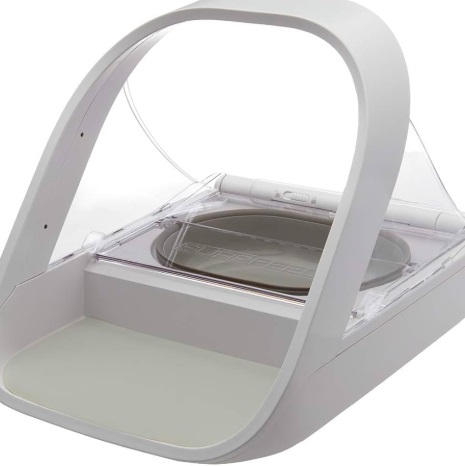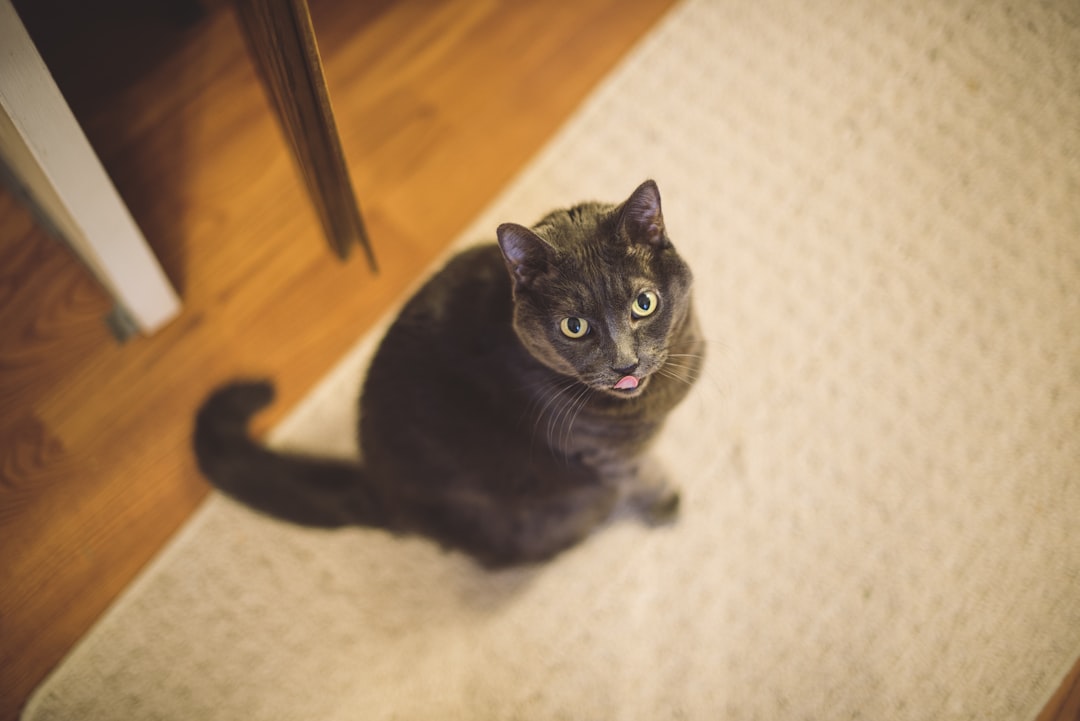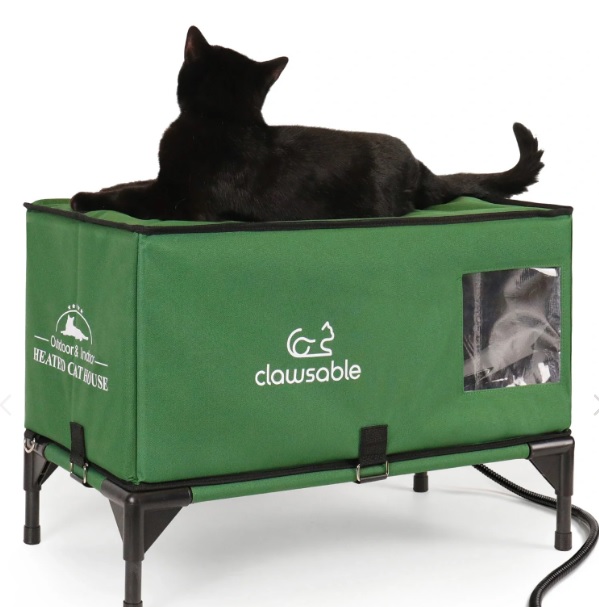Imagine a feeding solution that caters exclusively to your pet’s needs while preventing food theft from other animals. A microchip cat feeder leverages advanced technology to recognize your cat’s unique microchip, ensuring only they can access their meals. This innovative feeder provides not only portion control but also fosters healthy eating habits, making it a smart choice for pet owners. In this guide, we’ll explore the numerous benefits of a microchip cat feeder, how the technology works, and tips on choosing and maintaining the right one for your feline friend.
Understanding Microchip Cat Feeders
Microchip cat feeders have revolutionized pet feeding by integrating advanced technology with convenience. These feeders utilize microchip technology to provide a tailored feeding experience for your furry friend. Here’s a closer look at how they work and their unique features:
- Personalized Feeding: The microchip cat feeder recognizes your cat’s microchip, allowing only them to access the food. This feature prevents food theft by other pets, ensuring your cat gets their rightful meal without competition.
- Automatic Portion Control: With programmable settings, you can portion out meals precisely. This helps in managing your cat’s weight and prevents overfeeding.
- Hygienic Design: Many microchip cat feeders include sealed compartments, which keep food fresh and protected from pests.
Key Features:
| Feature | Description |
|---|---|
| Microchip Recognition | Reads RFID or implanted microchips |
| Programmable Time Settings | Schedule meals for specific times |
| Portion Control | Adjustable portion sizes for each meal |
| App Integration | Monitor feeding habits via smartphone apps |
In summary, a microchip cat feeder not only simplifies feeding routines but also promotes healthy eating habits by ensuring your cat receives the right amount of food at the right time. It’s a beneficial investment for cat owners looking to streamline their feeding process!
How Microchip Technology Works
Microchip cat feeders utilize advanced technology to ensure seamless interaction between your pet and the feeder. This innovative system primarily relies on RFID (Radio Frequency Identification) technology. Here’s a breakdown of how it works:
- Microchip Implantation: Most microchip cat feeders require your cat to have a microchip implanted. This tiny chip contains a unique identification number linked to your pet’s information.
- RFID Reader: The feeder is equipped with an RFID reader that scans for the presence of your cat’s microchip. When your cat approaches the feeder, the reader activates.
- Access Control: If the feeder detects the registered microchip, it unlocks the feeding compartment. This ensures that only the designated cat can access its food, preventing unauthorized access by other pets.
- Feeding Mechanism: Once the feeder is activated, it dispenses the appropriate portion of food based on your pre-set schedule.
- User-Friendly Settings: Many microchip cat feeders come with smartphone apps or digital displays allowing you to track feeding schedules and portion sizes easily.
Key Features of Microchip Technology:
- Ensured Nutrition: Controls access to food, promoting healthy eating habits.
- Reduced Food Waste: Minimizes overfeeding by regulating portions for each pet.
- Simplified Management: Provides easier feeding management for multi-pet households.
In summary, the microchip technology in a microchip cat feeder ensures your cat is the only one who can enjoy its meals, offering convenient and tailored feeding solutions.
Benefits of Using a Microchip Cat Feeder
A microchip cat feeder offers several compelling advantages that improve the feeding experience for both pet owners and their feline companions. Here are some key benefits:
- Prevention of Food Theft: If you have multiple cats, a microchip cat feeder ensures that only the designated pet accesses its food. This prevents food stealing and helps manage feeding routines effectively.
- Accurate Portion Control: These feeders allow you to customize portion sizes. You can set specific amounts to avoid overfeeding, helping maintain your cat’s ideal weight.
- Scheduled Feeding Times: A microchip cat feeder can be programmed to dispense food at designated times. This establishes a feeding schedule that promotes healthier eating habits and prevents begging behavior.
- Reduced Waste: By controlling portions and meal times, you minimize food waste. This not only saves money but also contributes to a more eco-friendly lifestyle.
- Convenience: Ideal for busy pet owners, these feeders automate the feeding process. You can easily manage feeding schedules from your smartphone or device.
Here’s a quick comparison of traditional feeders versus microchip cat feeders:
| Feature | Traditional Feeders | Microchip Cat Feeders |
|---|---|---|
| Food Theft Prevention | ❌ | ✔️ |
| Portion Control | ❌ | ✔️ |
| Scheduled Feeding | ❌ | ✔️ |
| App Connectivity | ❌ | ✔️ |
In summary, a microchip cat feeder provides a tailored feeding solution for your cat, enhancing convenience, health, and overall satisfaction for both pets and owners alike.
Choosing the Right Microchip Cat Feeder
Selecting the ideal microchip cat feeder for your feline friend requires careful consideration of several factors. Below, we break down key aspects to help you make an informed decision:
Key Factors to Consider
- Microchip Compatibility:
Ensure the feeder recognizes your cat’s specific microchip brand. Some feeders accept all brands, while others may only work with certain models. - Feeder Design:
Look for a design that suits your cat’s feeding style. Options include:- Automatic feeders: Dispense food at scheduled times.
- Manual feeders: Require you to refill food but offer flexibility in meal times.
- Portion Control:
Choose a feeder that allows you to set appropriate portion sizes. This feature ensures your cat maintains a healthy weight, which is crucial for overall well-being. - Material Quality:
Opt for feeders made of durable, pet-safe materials. Stainless steel and BPA-free plastics are excellent choices for long-lasting use. - Ease of Cleaning:
Select a microchip cat feeder with easily removable parts. This feature simplifies cleaning and helps maintain hygiene.
Comparison Table
| Feature | Option A | Option B |
|---|---|---|
| Microchip Compatibility | Universal | Specific Brands |
| Design | Automatic | Manual |
| Portion Control | Yes | Limited |
| Material | Stainless Steel | BPA-Free Plastic |
| Cleaning Ease | Easy to disassemble | Somewhat complex |
By assessing these aspects, you can choose a microchip cat feeder that not only meets your cat’s needs but also fits seamlessly into your lifestyle.
Setting Up Your Microchip Cat Feeder
Setting up your microchip cat feeder is a straightforward process, ensuring that your feline friend enjoys hassle-free meals. Follow these steps for an effective setup:
- Choose the Right Spot:
- Place the feeder in a quiet area where your cat feels comfortable. Avoid high-traffic spaces to minimize distractions.
- Assemble the Feeder:
- Carefully unpack the feeder and follow the manufacturer’s instructions to assemble it. Ensure all parts fit securely.
- Program the Microchip:
- Activate the feeder by syncing it with your cat’s microchip. This usually involves:
- Turning on the feeder.
- Inserting batteries if required.
- Scanning your cat’s microchip with the feeder’s reader.
- Activate the feeder by syncing it with your cat’s microchip. This usually involves:
- Set Feeding Schedule:
- Most microchip cat feeders allow you to customize feeding times. Set specific mealtimes to establish a routine.
- Adjust Portion Sizes:
- Determine the appropriate portion sizes for your cat’s dietary needs. Many feeders come with adjustable settings to dispense the correct amount.
- Test the Feeder:
- Conduct a trial run. Ensure the feeder recognizes your cat’s microchip and dispenses food correctly.
- Monitor Your Cat:
- Initially, supervise your cat while using the feeder. This helps them adjust and ensures the feeder works as intended.
By carefully following these steps, you’ll ensure that your microchip cat feeder operates smoothly, allowing your cat to enjoy its meals safely and conveniently.
Feeding Schedules and Portion Control
A microchip cat feeder offers an innovative solution for managing your feline’s feeding routine and nutritional intake. By utilizing microchip technology, these feeders ensure that each cat receives the right amount of food at their designated feeding times, promoting a healthier lifestyle and reducing waste. Here’s how feeding schedules and portion control work with a microchip cat feeder:
Key Features
- Personalized Feeding Schedules: Set specific times for feeding your cat, catering to their natural eating habits. For example:
- Morning: 7 AM
- Afternoon: 1 PM
- Evening: 6 PM
- Automatic Portion Control: Customize portion sizes based on your cat’s dietary needs. This feature helps prevent overeating or underfeeding. Common portion sizes include:
- ¼ cup
- ½ cup
- 1 cup
Benefits
- Reduces Overeating: With a microchip cat feeder, you can limit access to food, helping to manage weight and prevent health issues such as obesity.
- Encourages Routine: Pets thrive on routine. Establishing a consistent feeding schedule can improve their overall well-being and behavior.
Example Comparison Table
| Feeder Type | Automated Portions | Personalized Schedule | Suitable for Multiple Cats |
|---|---|---|---|
| Microchip Cat Feeder | Yes | Yes | Yes |
| Traditional Feeder | No | No | No |
By investing in a microchip cat feeder, you provide your furry friend with a structured and controlled feeding environment that can enhance their health and happiness.
Troubleshooting Common Issues
Even the most advanced technology, like the microchip cat feeder, may encounter occasional issues. Here are some common problems and suggested solutions to keep your feeding system running smoothly:
Common Issues & Solutions
- Microchip Not Recognized
- Solution: Ensure the cat’s microchip is properly registered and functioning. Check the feeder’s settings to see if it’s correctly programmed to recognize your pet’s microchip.
- Feeder Dispense Malfunction
- Solution: Inspect the feeder for any blockages. Remove any food particles that may be stuck in the dispensing mechanism. Regularly clean the feeder to maintain proper functionality.
- Power Issues
- Solution: If your microchip cat feeder is not powering on, check the batteries or ensure it is properly plugged in. Replace old batteries routinely to avoid interruptions.
- Connectivity Problems (for Wi-Fi enabled models)
- Solution: Confirm that your Wi-Fi is functioning and that your feeder is within range of the router. Reset the feeder to re-establish the connection.
- App Sync Issues
- Solution: If using an app to control the feeder, ensure that it is updated to the latest version. Restarting the app often resolves most syncing issues.
Tips for Prevention
- Regular Maintenance: Clean the feeder regularly to avoid food build-up.
- Updates: Stay updated with firmware and app releases.
- User Manuals: Always refer to the manufacturer’s user manual for specific troubleshooting guidance.
These proactive strategies will help you maximize the advantages of your microchip cat feeder and ensure smooth operation for your furry friend.
Cleaning and Maintenance Tips
Maintaining your microchip cat feeder is essential for ensuring its longevity and proper functioning. Here are some cleaning and maintenance tips to keep your device in optimal condition:
- Regular Cleaning: Clean your microchip cat feeder at least once a week. This prevents buildup of food residues and ensures a hygienic feeding environment for your cat.
- Disassemble Parts: Frequently detach all removable components, such as the food bowl, lid, and feeding tray. Most items are dishwasher-safe, making cleaning easier.
- Use Gentle Detergents: When washing, use mild soap and warm water. Avoid harsh chemicals that could leave harmful residues or damage the feeder.
- Check Microchip Reader: Regularly inspect the microchip reader for dirt or debris. A clean sensor ensures accurate recognition of your cat and prevents feeding issues.
- Battery Maintenance: If your feeder operates on batteries, check their status every couple of months. Replace old batteries promptly to avoid operation interruptions.
- Inspect for Wear and Tear: Keep an eye on cables, connectors, and moving parts. If you notice wear, repair or replace the affected parts to ensure consistent performance.
By following these simple cleaning and maintenance tips for your microchip cat feeder, you will enhance its lifespan and effectiveness, ensuring that your pets receive their meals without disruption.
User Experiences and Testimonials
Microchip cat feeders have gained traction among pet owners for their innovative approach to feeding. Many users report significant improvements in their pets’ feeding habits and overall health. Here’s what some users share about their experiences:
- Enhanced Feeding Control: Pet owners appreciate the precision of a microchip cat feeder. It allows them to monitor and control their pets’ eating, ensuring that each pet receives the right amount of food tailored to its needs.
- Reduction in Food Theft: Users highlight that multi-pet households benefit tremendously. The microchip technology prevents food theft and overeating among pets, leading to healthier weights.
- Convenience: With programmable feeding schedules, many users enjoy the convenience of automated feedings. They no longer need to rush home to feed their cats.
- Biometric Security: Owners report peace of mind knowing that only their registered pets can access the food. This feature significantly reduces unauthorized feeding by stray or unregistered animals.
Testimonials
- “Our microchip cat feeder has changed the game for our three cats! No more fighting over food!” – Jane D.
- “The peace of mind is invaluable. I can now leave for the weekend without worrying if my cats are eating as they should.” – Mark T.
In summary, user experiences with microchip cat feeders demonstrate their efficacy and ease, showcasing them as an excellent investment for responsible pet ownership.
Conclusion: Is a Microchip Cat Feeder Right for You?
Deciding whether a microchip cat feeder is the right fit for your household depends on various factors unique to your feline friend and lifestyle. Here are some considerations to guide your decision:
- Multiple Cats: If you have more than one cat, a microchip cat feeder can help regulate feeding. It prevents food theft and ensures that each cat receives the appropriate portion based on its needs.
- Health Monitoring: For pet owners concerned about their cat’s weight or health, a microchip cat feeder allows for precise portion control, supporting diet management and weight loss.
- Convenience: These feeders offer flexibility, enabling you to set feeding schedules that fit your routine—ideal for busy pet owners who may not always be present at mealtime.
- Security Features: By using a microchip identification system, these feeders deter other pets from accessing food. This is especially useful in multi-pet households.
Ultimately, if you value convenience, health monitoring, and tailored feeding, a microchip cat feeder could be an excellent investment. Keep in mind the initial setup costs, as well as the maintenance involved. Balancing these aspects will help you decide if this innovative feeding solution meets your and your cat’s needs.



